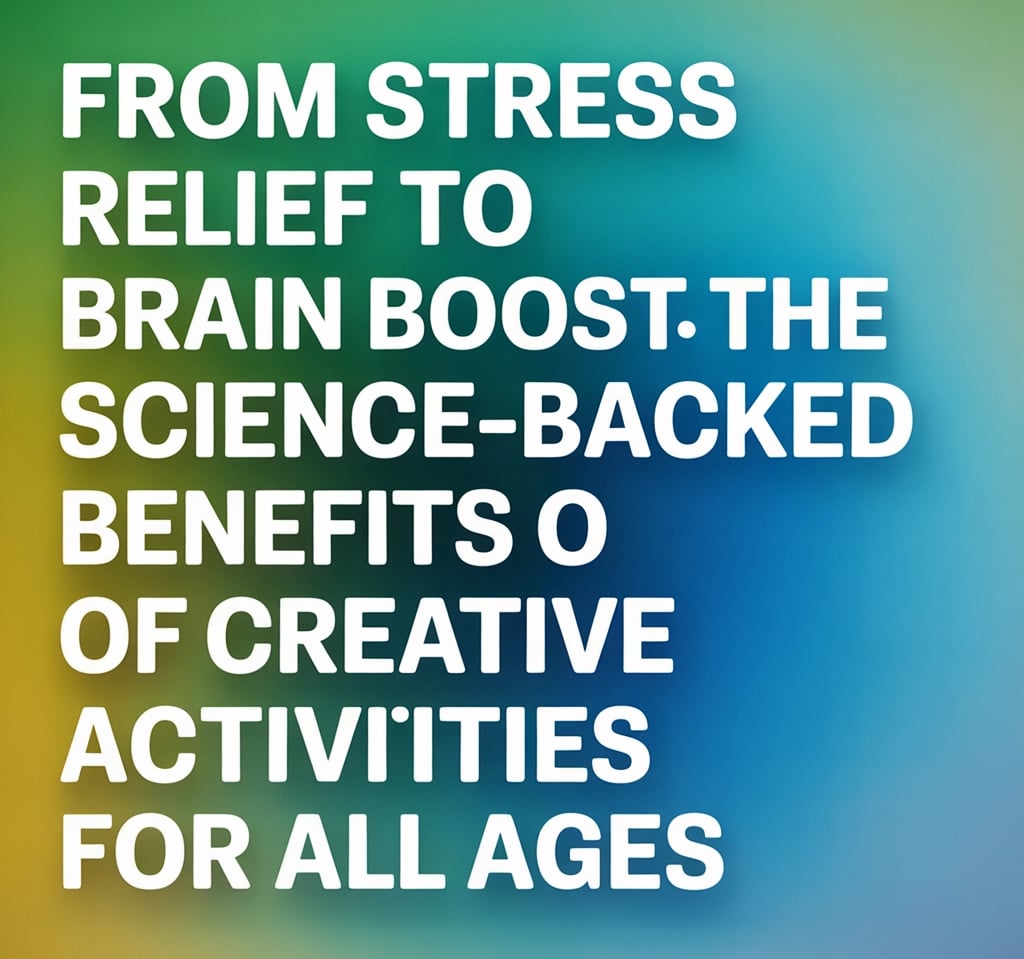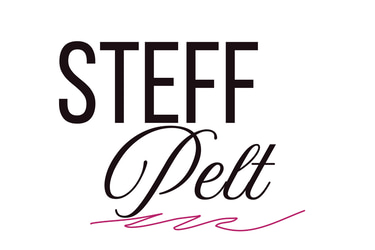Welcome to steff pelt!
From Stress Relief to Brain Boost: The Science-Backed Benefits of Creative Activities for All Ages
Explore how creative activities—from coloring to puzzles—help reduce stress, sharpen focus, and boost brainpower at any age. Discover the science behind these benefits and get inspired to add more creativity to your life!
SELF-CARE AND ART
Penny Pelt
8/13/20255 min read


There’s a reason creative activities—from coloring and puzzle-solving to painting, journaling, and playing music—are having a major moment right now. Whether you’re five or ninety-five, the science is clear: creative expressions do more than brighten your afternoon. They actually spark measurable transformations in your mind and body. Let’s explore how creative hobbies work their magic across all ages and why practicing creativity is a winning move for lifelong wellness.
How Creativity Lights Up Your Brain
It’s easy to feel the “buzz” after a creative session, but the reason behind it goes much deeper. When you draw, color, write, or make music, your brain begins firing across multiple regions all at once. Think of it as a full-body workout for your mind. The frontal lobe is busy planning and solving problems, the motor cortex directs your hands, the visual cortex interprets shapes and color, and your limbic system—the brain’s emotion center—sparks memories and feelings at the same time [4].
This orchestra of neural activity builds and strengthens fresh connections, a process called neuroplasticity. That’s your brain’s natural ability to rewire itself, which is essential for learning, resilience, and healthy aging. The more you experiment with creative tasks, the stronger and more flexible your mind becomes.
Flow States: Why You Lose Track of Time
One of the joys of being creative is entering what psychologists call a flow state. You know that feeling when you’re so absorbed in an activity, hours slip by in what feels like minutes? This is your brain’s equivalent of hitting “Zen mode.” Research shows these moments are hugely beneficial for emotional regulation, learning, and stress relief [1].
Flow states activate brain circuits tied to focus and reward, helping you tune out worries and distractions. Over time, even regular short sessions of creativity can retrain your mind to more easily achieve these calm, focused states well outside the studio or coloring corner [3].
Creative Activities: The Natural Stress Antidote
Here’s where it gets wild: creating art, writing, or playing an instrument physically kicks your body out of fight-or-flight mode. That’s thanks in part to the parasympathetic nervous system, which signals your body to relax. In a groundbreaking 2016 study, people who spent just 45 minutes making art—regardless of their experience—showed a measurable drop in cortisol, the body’s main stress hormone [1].
It doesn’t stop with art. Activities like puzzle-solving, knitting, or music therapy have been shown to reduce heart rate and blood pressure, improve emotional self-control, and even help people bounce back faster from illness or emotional upheaval [1].
Looking to dig deeper into stress relief with creativity? Check out our post on coloring for stress relief in 2025.
Brain Boost: Cognitive Benefits for Every Age
Creative pastimes don’t just help you unwind. They actively sharpen your brain. Engaging in activities like coloring, quilting, music-making, or journaling lights up the parts of your mind responsible for decision-making, critical thinking, and emotional intelligence [2]. Regular creative play:
Improves your ability to focus and tune out distractions
Increases mental flexibility, helping you tackle challenges in new ways
Boosts memory by tying new ideas to colors, shapes, and experiences [3]
Fosters mindfulness—the practice of being “in the moment”—which is shown to lower anxiety and boost resilience [2]
Recent neuroscience has found that creativity is almost like “brain training” for adults and older people, as it keeps neural pathways active and can even stave off cognitive decline [4]. Kids, meanwhile, build foundational skills for language and problem-solving when they’re doodling or making up stories. Adults who color or knit while watching TV may notice improved attention span over time, too.
You can read more about top creative trends and cognitive perks by visiting our article on coloring book trends inspiring minds this year.
Mental Health, Mood, and Emotional Healing
Sometimes the very best outlet for big feelings is simply to get them out through art. Creative expression allows you to work through tough emotions—grief, anxiety, sadness, or even confusion—in a safe and private way. Scientific studies back this up: art, writing, and music therapies significantly decrease depressive symptoms, lessen anxiety, and support emotional balance [2][5].
Engaging in creative goals even boosts your everyday mood. One study published in The Journal of Positive Psychology found that people who made time for a creative project reported feeling happier, more enthusiastic, and generally optimistic [5]. That may be due to an uptick in endorphins—your brain’s “feel good” messengers—that come with creative expression.
Plus, creative activities can support a sense of accomplishment and agency—something especially vital for people processing change, and for older folks who may be nurturing a sense of autonomy into later years.
Interested in building a creative routine for mood and mindfulness? Here’s our guide to making coloring a part of your relaxation routine.
Creativity, Community, and Social Well-being
While solo creative activities are powerful, working alongside others—whether that’s in a book club, choir, art class, or online community—offers additional layers of benefit. Social creativity boosts confidence, offers support, and decreases feelings of isolation or loneliness [2]. For kids and teens, group creative tasks foster collaboration, empathy, and social understanding. For adults, these experiences can protect against depression and keep minds sharp.
Check out our favorite digital downloads and creative outlets for all ages.
Therapeutic Benefits at Every Life Stage
Creative activities aren’t just enjoyable—they’re also powerful therapeutic tools. Art therapy is a well-established option for people coping with PTSD and trauma, giving them ways to process difficult experiences beyond words [5]. Kids use drawing to express what they can’t say aloud. Seniors use storytelling or painting to keep memories vivid and stay engaged.
Educators increasingly use art and play to help children manage emotions, build emotional intelligence, and learn self-control. And adults in high-stress jobs report that art nights, puzzle-breaks, and coloring routines provide essential resilience for coping with life’s challenges.
If you’re curious about how to create a creative space at home, we have tips on setting up the perfect coloring corner for relaxation.
Creativity as a Lifelong Wellness Tool
No matter your age or background, weaving creative moments into your routine is like giving your mind and body a gentle upgrade. It’s not about being “artistic”—it’s about using creativity as a form of self-care and growth that science fully supports.
So next time you pick up a coloring book, start a puzzle, join a drum circle, or jot in a journal, know you’re doing your brain (and your heart) a world of good. If you’d like to discover more science-backed ways to fuel your mind and spirit, explore our creative collection and tips at Steff Pelt.
References:
Kaimal, G., Ray, K., & Muniz, J. (2016). Reduction of Cortisol Levels and Participants’ Responses Following Art Making. Art Therapy.
Stuckey, H. L., & Nobel, J. (2010). The Connection Between Art, Healing, and Public Health. American Journal of Public Health.
“Mindfulness and creativity,” Greater Good Science Center, UC Berkeley.
“How the Brain Responds to Art.” Harvard Health Publishing.
Conner, T. S., DeYoung, C. G., & Silvia, P. J. (2018). Everyday creative activity as a path to flourishing. The Journal of Positive Psychology.
For more inspiration or to start your creative journey, visit our digital downloads and activity book section.
info@steffpelt.com
Some links on this site are affiliate links. This means that if you make a purchase through these links, I may earn a commission at no extra cost to you. These affiliations help me continue to create valuable content and share relevant recommendations. The majority of the commissions I receive come from Amazon. Thank you for your support!
